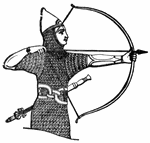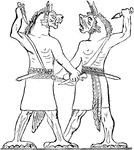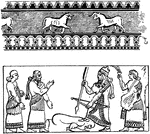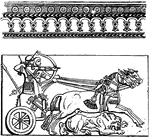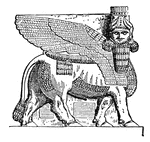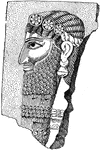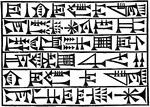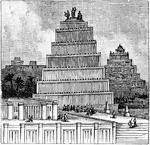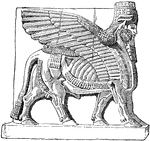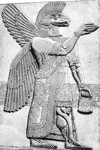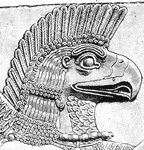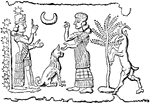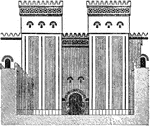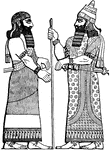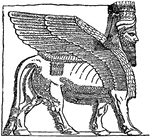This ClipArt gallery offers 104 illustrations of the historic Assyrian Empire. Images include people, ornament, buildings, architectural details, religion, and the arts.
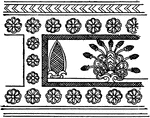
Assyrian Ornament
The purely conventional ornaments — the rosette, guilloche, and lotus-flower, and probably also…

Assyrian Princess in Full Dress
In ancient Assyria, princes, princesses, and priests vied with each other in luxury.

Assyrian Soldiers Fighting
A depiction of two soldiers fighting for Assyria, using bow and arrows against their enemies.
An Assyrian Statue
"The king, a rude heroic figure, stands upright before the god. He holds a club in the left hand, in…

Babylonia Poster
A poster of ancient Babylonia: Chaldea, Assyria, Persia, soldiers, religion, writing, and structures.
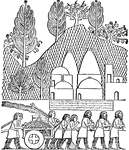
Bas-relief
"Bas-relief of group of buildings at Kuyunjik. (After Layard.)" — The Encyclopedia Britannica,…

Assyrian Hunting Bas-relief
"Assyrian bas-relief. Part of a Lion-hunt, from Nimrud." —D'Anvers, 1895
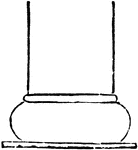
Base of a Column in a Bas-Relief from Kuyunjik
Some reliefs portray small façades of temples with capitals. This figure brings out prominently…
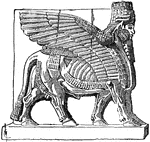
An Assyrian Winged Bull
Also known as a Lamassu. An ancient tutelary deity, often considered to be female.
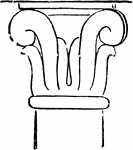
Capital in a Bas-Relief from Kuyunjik
Some reliefs portray small façades of temples with capitals. This figure shows an affinity, although…
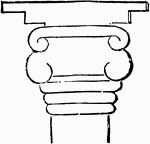
Capital in a Bas-Relief from Kuyunjik
Some reliefs portray small façades of temples with capitals. This figure brings out prominently…
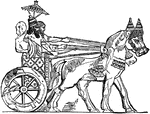
Assyrian War Chariot
"The stalwart character and aggressive bearing of the Assyrians were particularly shown in war. The…
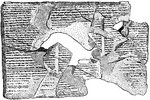
The Deluge Tablet
"Contains the narrative of the flood as pieced together and published by George Smith in 1872. There…
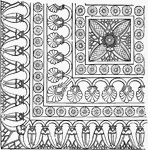
Part of the Floor Decoration from North Palace, Nineveh
This portion of a pavement-slab in the North Palace at Nineveh has a certain accordance with the Grecian…

Assyrian Fringe
"Assyrian Fringes, from ancient bas-reliefs. Fringe: an ornamental bordering formed of short lengths…

Assyrian Fringe
"Assyrian Fringes, from ancient bas-reliefs. Fringe: an ornamental bordering formed of short lengths…

Guilloche Ornament Painted on Burnt Clay, from the Ruins of Nineveh
Guilloche, usually spelled without the acute accent on the final e, describes a repetitive architectural…
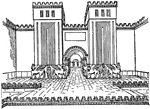
Khorsabad Palace Gate
Dur-Sharrukin ("Fortress of Sargon"), present day Khorsabad, was the Assyrian capital in the time of…
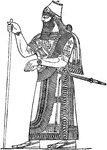
Assyrian King
"The Assyrian physiognomy, as determined by the sculptures exhumed from the ruins of Nimrud and Khorsabad,…



